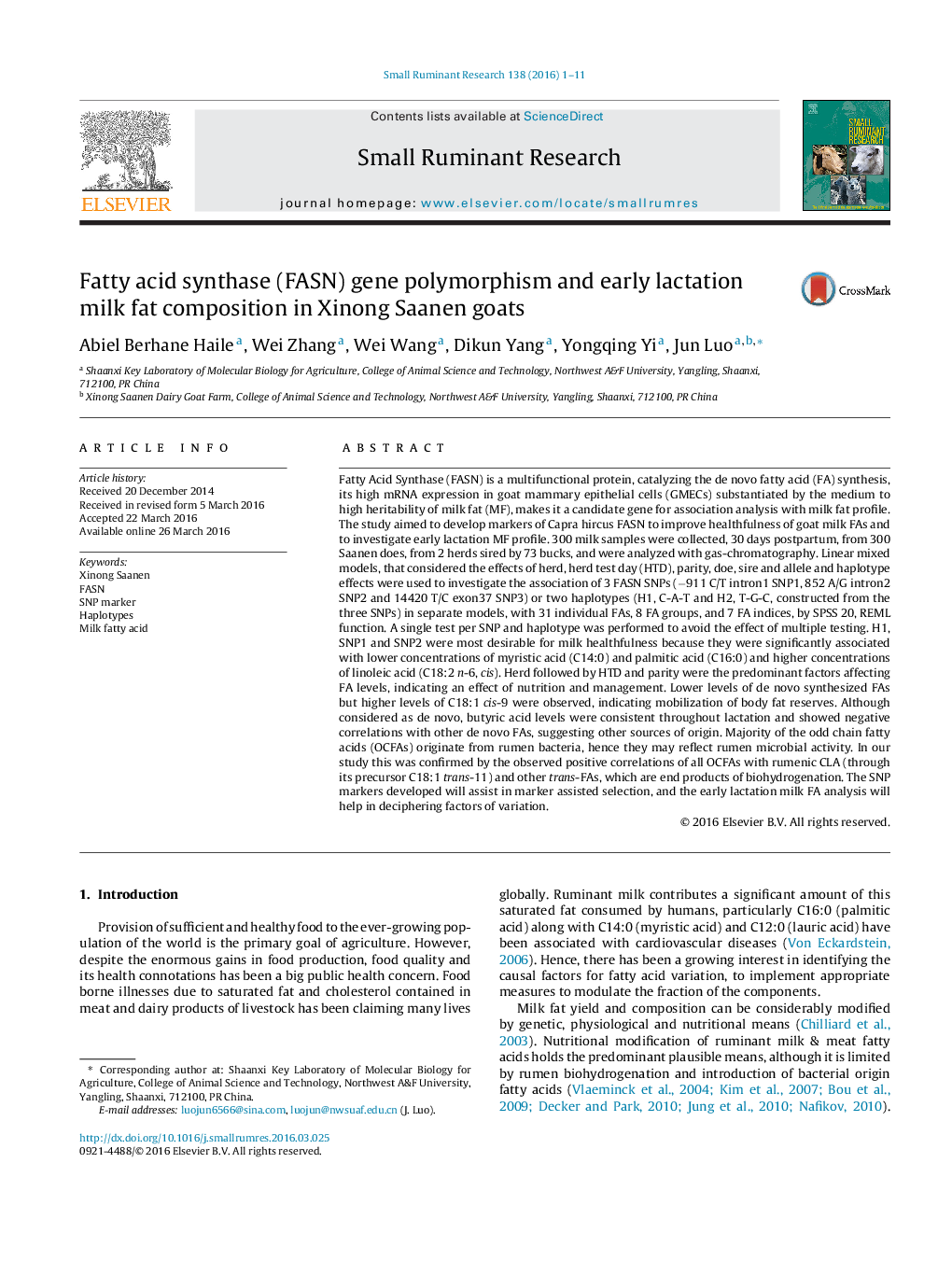| کد مقاله | کد نشریه | سال انتشار | مقاله انگلیسی | نسخه تمام متن |
|---|---|---|---|---|
| 2456745 | 1554354 | 2016 | 11 صفحه PDF | دانلود رایگان |

• FASN SNPs and haplotypes shown associations with healthfulness of milk.
• Lower de novo fatty acids and higher palmitic and oleic acids were observed.
• Butyric acid negatively correlated with de novo fatty acids despite same source of origin.
• Odd chain fatty acids shown a correlation pattern with biohydrogenation intermediates.
• Herd, parity and HTD had significant effects on majority of the fatty acids.
Fatty Acid Synthase (FASN) is a multifunctional protein, catalyzing the de novo fatty acid (FA) synthesis, its high mRNA expression in goat mammary epithelial cells (GMECs) substantiated by the medium to high heritability of milk fat (MF), makes it a candidate gene for association analysis with milk fat profile. The study aimed to develop markers of Capra hircus FASN to improve healthfulness of goat milk FAs and to investigate early lactation MF profile. 300 milk samples were collected, 30 days postpartum, from 300 Saanen does, from 2 herds sired by 73 bucks, and were analyzed with gas-chromatography. Linear mixed models, that considered the effects of herd, herd test day (HTD), parity, doe, sire and allele and haplotype effects were used to investigate the association of 3 FASN SNPs (−911 C/T intron1 SNP1, 852 A/G intron2 SNP2 and 14420 T/C exon37 SNP3) or two haplotypes (H1, C-A-T and H2, T-G-C, constructed from the three SNPs) in separate models, with 31 individual FAs, 8 FA groups, and 7 FA indices, by SPSS 20, REML function. A single test per SNP and haplotype was performed to avoid the effect of multiple testing. H1, SNP1 and SNP2 were most desirable for milk healthfulness because they were significantly associated with lower concentrations of myristic acid (C14:0) and palmitic acid (C16:0) and higher concentrations of linoleic acid (C18:2 n-6, cis). Herd followed by HTD and parity were the predominant factors affecting FA levels, indicating an effect of nutrition and management. Lower levels of de novo synthesized FAs but higher levels of C18:1 cis-9 were observed, indicating mobilization of body fat reserves. Although considered as de novo, butyric acid levels were consistent throughout lactation and showed negative correlations with other de novo FAs, suggesting other sources of origin. Majority of the odd chain fatty acids (OCFAs) originate from rumen bacteria, hence they may reflect rumen microbial activity. In our study this was confirmed by the observed positive correlations of all OCFAs with rumenic CLA (through its precursor C18:1 trans-11) and other trans-FAs, which are end products of biohydrogenation. The SNP markers developed will assist in marker assisted selection, and the early lactation milk FA analysis will help in deciphering factors of variation.
Journal: Small Ruminant Research - Volume 138, May 2016, Pages 1–11